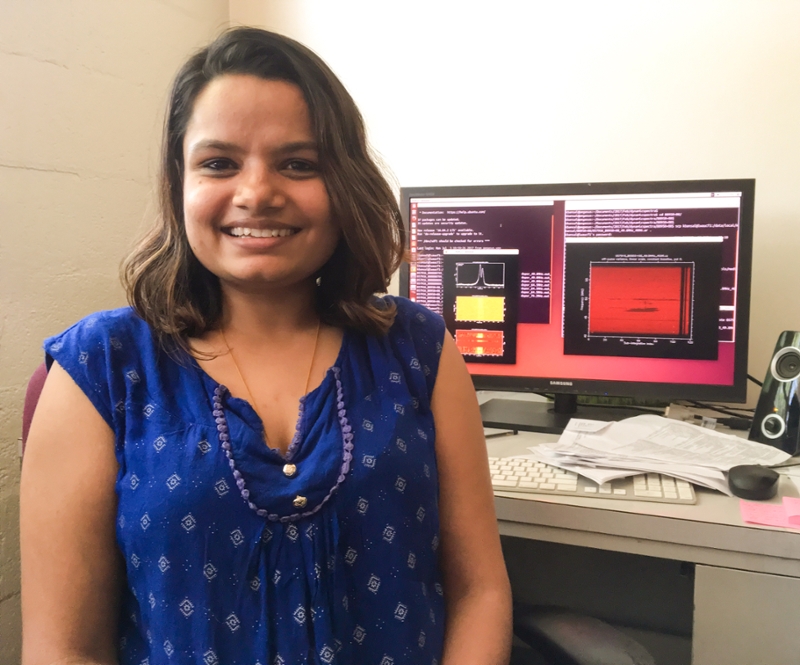UNM Graduate Student Makes Groundbreaking Astronomical Discovery
July 18, 2017

Doctoral student Karishma Bansal has made international news for her first-author (and her first-ever published!) article in the Astrophysical Journal regarding the groundbreaking discovery of orbiting black holes—one which could even help us see into the future of our very own galaxy.
Bansal worked with UNM’s Dr. Gregory Taylor and scientist from other universities on the discovery. For over a decade, Taylor and his colleagues utilized the Very Long Baseline Array – a series of 10 radio telescopes located across much of North America from Hawaii to the Virgin Islands with one telescope in western New Mexico—to conduct very fine measurement from enormous distances away from Earth. Bansal then used the collected data to prove orbital movement between the two black holes from measurements made since 2006 to present.
These orbiting black holes resulted from two galaxies merging together. Scientists have theorized this scenario was possible; as Bansal explains, “Any decent sized galaxy has a super massive black hole at the center, so given all those statistics we would expect these systems to be more common.” However, Bansal and Taylor’s work is the first to actually observe this phenomenon, a system which Bansal says is “the most complex . . . ever detected.” And, since our own Milky Way galaxy is due to collide with the Andromeda galaxy in about a billion years, Bansal and Taylor’s research gives us an advance view of what that collision and its effects could look like. The findings may also shed additional light on how gravitational waves work.
The project has attracted the attention of the campus, local, national, and international news media, even in her home country of India. Despite the press coverage, however, Bansal notes that she only has partial funding for the next school year. “You guys make me famous now, and nobody gives me money,” she says with a laugh, noting that as an international student she is ineligible for the bulk of funding available in her field.
Bansal came from India to UNM three years ago to work with Dr. Taylor. When she’s not busy making revolutionary astronomical discoveries, she goes hiking, biking, and participates in mixed martial arts to relax and, as she says, “kick some butt.” She is passionate about astronomy, has several projects in process, and hopes to pursue research in the field past graduation. Where would she go to research if she could choose?
“The South Pole,” she says with a smile. “They have pretty cool telescopes there.”
